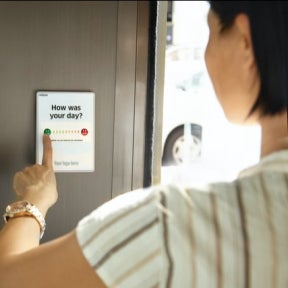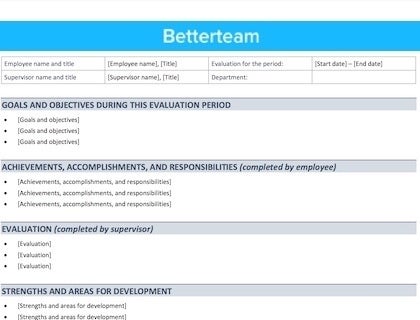How to Measure Employee Engagement:
A step-by-step guide to effectively monitoring employee engagement.
Enhancing your business through employee engagement.
Administer employee engagement surveys.

An employee survey that asks your employees to rate their own level of engagement has been the traditional way of measuring engagement. These surveys are sometimes called employee satisfaction surveys because they do a good job of gauging how satisfied your workforce is.
Monitor meeting frequency.

How often do managers meet with employees? How often are these meetings one-on-one? Regular communication with management is connected with high engagement, so meeting frequency is a good indicator.
Track use of discretionary time.

How often do employees use discretionary time - time they're not required to work - to finish something? Do they sometimes work through breaks, after hours, or on weekends? This is an indicator of being engaged.
Analyze tardiness and absences.

This is the flip side of the previous indicator. Do employees get back late from breaks, leave early, or arrive late? Are they taking more sick days than usual? If so, it's an indicator of low engagement.
Evaluate discretionary activities.

Do employees participate in groups, meetings, and events that are voluntary? Or do they try to get away from work and all things related to it as quickly as possible?

Employee Engagement Survey Template:
Download this free employee engagement survey and measure engagement at your company.
Download NowEmployee Engagement Survey Questions:
- Do you meet with your manager often enough?
- If you go above and beyond, will your manager notice?
- If you go above and beyond, will your colleagues notice?
- Does your work here have an overall purpose?
- Should you have more control over your schedule?
- Should you have more say in what projects you work on?
- Should you have more say in how you work on projects?
- Do you feel closely connected with your co-workers?
- Does your manager look for your strengths and help you build on them?
- Does your manager look for your weaknesses and help you correct them?
Employee Engagement Ideas:
1. Encourage regular meetings with supervisors.
Having regular meetings with their managers or supervisors increases employee engagement, especially for millennials.
2. Be flexible about hours if possible.
A greater sense of autonomy - or control over their lives - improves engagement.
3. Give employees more autonomy.
You can achieve this by giving them more say in what they work on and how they do it.
4. Recognize when employees go above and beyond.
Recognition of work that is discretionary, or beyond the minimum required for their job, is key to improving engagement.
5. Make it easy for co-workers to give each other recognition.
Recognition from peers is also important for improving engagement, and possibly even more important and effective than management recognition.
6. Focus on strengths.
Studies show that when managers focus on building employee strengths, rather than correcting weakness, engagement increases.
7. Invest in training and development.
Employees are more able to go “above and beyond” when they’ve got the training they need. It also shows you’re willing to invest in their future.
Examples of Employee Engagement Ideas:
Here are some real-world examples of what companies have done for employee engagement programs.
1. Pixar listens to all employee ideas about anything.
This company is known for a creative culture that produces hit after hit. Co-founder Ed Catmull notes that they listen to any employee's ideas about anything. Giving everyone in your company a voice allows them a sense of autonomy and the feeling they're part of something bigger.
2. HubSpot gives employees unlimited book downloads.
HubSpot pays for employee access to unlimited Amazon book downloads. Perks are generally considered ineffective when it comes to engagement, so why does this work? My theory is that books spark creativity and ideas, which in turn spark excitement and a desire to make great things happen.
3. B. Braun sponsors a company book club.
Books again! This company uses them to improve employee bonds, via a company-sponsored book club. The company pays for all the books, employees get to choose them.
4. Webmart gives employees time and money for charitable causes.
This UK-based printing company gives employees 1 day and £250 (about $320) to donate to the charity of their choice. Part of engagement is creating a sense of purpose for employees - and helping them use work to donate or volunteer for causes or a nonprofit organization is a great way to do it.
5. Zappos has a peer recognition program.
It's hard not to mention Zappos when it comes to engaging employees, and hard to pick just one thing they do. One cool thing is their coworker bonus program, where peers decide who's gone above and beyond and give them a cash reward each month. At $50, it's not about the money, it's about peer recognition.
Employee Engagement Strategies


